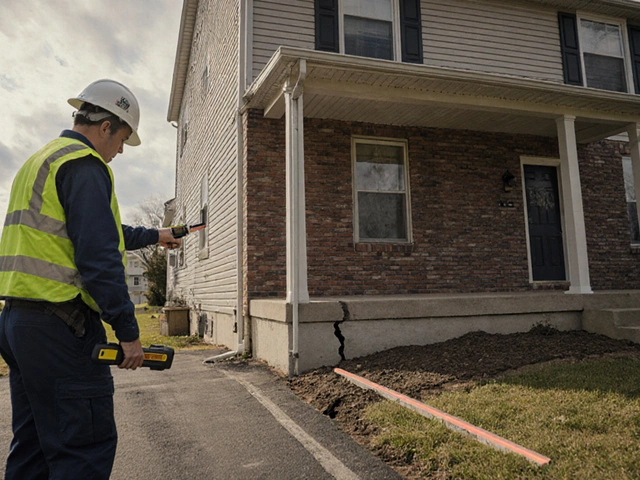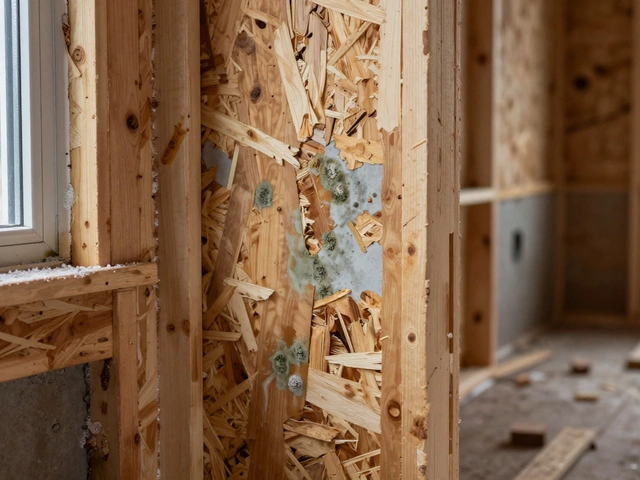House Cracks: What They Mean and How to Deal With Them
Noticed a line in your wall or ceiling and wondered if it’s just a little thing or a big problem? House cracks are one of those things that look harmless until they start growing. The good news is most cracks have simple explanations, and you can often fix them yourself or know exactly when to call a pro.
Common Causes of House Cracks
First, understand where the crack came from. The most frequent culprits are settlement and moisture. When the soil under your foundation shifts – because it dries out, gets too wet, or isn’t compacted well – the house can move just enough to leave a hairline crack in plaster or drywall. These are usually vertical or diagonal and appear near windows, doors, or corners.
Another big cause is temperature changes. Wood framing expands in heat and contracts in cold, which can push the drywall and create surface cracks. If you see a pattern of cracks that line up with the studs, that’s a sign they’re from shrink‑/expand cycles rather than a structural issue.Water leaks are sneaky. A slow leak behind a bathtub or a roof gutter problem can soak the wood, rot it, and eventually cause the walls to crack. Look for stains, musty smells, or damp spots near the crack – that’s a red flag.
Lastly, poor construction practices, like using the wrong type of mortar or skimping on reinforcement, can lead to cracks that spread over time. In older homes, the “345 rule” (a simple layout measurement) can help spot when walls weren’t built square, which often shows up later as cracks.
When to Call a Professional
Most small cracks can be patched with joint compound, a little sanding, and a fresh coat of paint. However, if you notice any of these signs, it’s time to get a structural engineer or foundation specialist involved:
- Cracks wider than 1/4 inch (about the width of a pencil).
- Cracks that keep getting longer or bigger, even after a patch.
- Stair‑step cracks in brick or block walls – they resemble a set of stairs and usually mean the foundation is moving.
- Doors or windows that stick, won’t open properly, or have gaps around the frames.
- Odd sounds, like creaking or popping, especially after heavy rain or a freeze‑thaw cycle.
If any of these show up, don’t wait. A professional can run a soil test, check for water infiltration, and recommend the right repair method – from epoxy injection to underpinning or even a full foundation replacement.
When you do need help, choose a company that knows local soil conditions. In the UK, for example, heavy clay expands a lot in wet weather, while sandy soils drain quickly but may shift under heavy loads. A local quarry supplier like Lime Hillock Construction Material Resources can provide the right limestone aggregate or sand to stabilize the ground, making your repair last longer.
In the meantime, a few DIY steps can stop a crack from getting worse. Keep gutters clean so water doesn’t pool near the foundation. Add a drip edge on downspouts to direct water at least three feet away from the house. If the soil around your house looks dry, water it lightly during droughts – this helps keep the ground from shrinking too much.
For the actual patch, clean the crack, fill it with a high‑quality filler or epoxy, smooth it, and let it cure. Once dry, sand lightly and paint to match the surrounding wall. It’s a quick fix that buys you time while you decide on a permanent solution.
Remember, not every crack means your house is about to collapse. Most are just signs that the building is moving a little, which is normal. Spotting the cause, fixing moisture issues, and knowing when to call in a pro will keep your home safe and looking good for years to come.
How to Efficiently Repair Foundation Cracks in Your Home

Cracks in the foundation of a house can arise from various factors ranging from natural soil shifts to poor construction practices. The time it takes to fix them depends largely on the severity of the crack, the method of repair, and the accessibility of the site. Whether you are dealing with hairline cracks or something more severe, understanding the process can streamline repairs and mitigate potential damage. Homeowners should be informed of the multiple repair options and expected timelines to address and resolve foundation issues effectively.
read more



